There is something mystical about the oak tree, its acorns and leaves being symbolic in many countries, such as England, where the oak is considered the royal tree, with many pubs calling themselves 'The Royal Oak'. It is a symbol of strength, of power. It's also the reason it was chosen as the name for Romania's rugby team - Oaks. It gives the same impression of quiet, seated strength to the houses where it is used. Oak is valued both by those who work with it and those who have it in their homes as furniture. There are enough reasons for the article below to be dedicated to it.
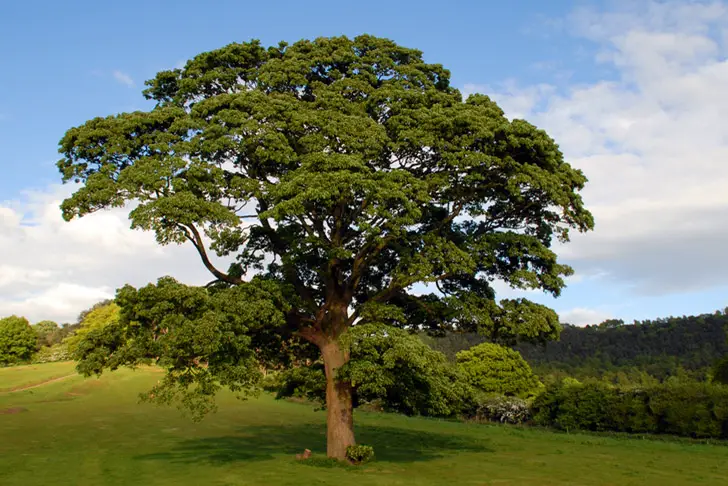
The oak tree, a blend of wisdom and mysticism
The species we are referring to is the pedunculate oak, and the scientific name is Quercus robur or Quercus pedunculata. It is also called European, common or English oak. In English it is english or european oak, in Italian oak, in French chene, in German eiche, and in Spanish European oak. It is native to Europe, Asia Minor and western Asia. It is also cultivated in other areas such as China, North America and Australia.
In the genus Quercus there are many different species (over 600, according to some sources), some similar to the European oak, others almost without any resemblance. For example, in southern Europe (Italy) there is Quercus brutia, which is very similar, and in the USA there is Quercus rubra, a species similar in name but very different in appearance. About known Quercus species such as cerus cerris (Quercus cerris) or gorun (Quercus petraea), find information on hereand here.
Throughout the ages, the significance of the oak tree has been a blend of wisdom and mysticism. It has often embodied strength, longevity and endurance and has a long and rich history in many cultures and mythologies. In ancient Greece, the oak was dedicated to Zeus, king of the gods, who was often depicted wearing a crown of oak leaves on his head, a symbol of power and authority. The Druids believed that oak trees were portals to the other world, where the gods and ancestors dwelt. The sacred wood of the oak tree was burned during the summer solstice celebrations, marking the transition to the other half of the year. In Norse mythology, the oak was associated with the thunder god Thor. The Vikings carved amulets and talismans from oak for protection. In medieval Europe, it was believed that if one listened carefully to the rustling of oak leaves one could hear messages from the spirit world offering guidance and insight.
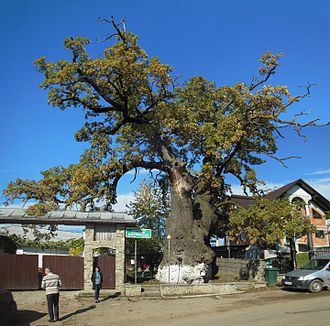
photo source: wikipedia.com
The pedunculate oak can live over 1000 years
The Pedunculate Oak is a strong and robust tree that can live for over 1000 years. The oldest oak in Romania, more than 900 years old, is in Suceava county. The girth of an old oak can reach up to 10-12 m. It normally grows to 30-35 m in height and 2-4 m in girth and is slow growing. The bark is blackish-brown, rough, deeply furrowed longitudinally and transversely and has a high tannin content. This is why it was intensively used in the past in tanning. It also has therapeutic properties, being used to make teas, tinctures and ointments. The branches are long and gnarled, and the crown broad and rich.
The leaves are drooping, lobed, have between 4 and 8 lobes, and the petiole is short. In autumn the leaves turn a very attractive yellowish-brown colour. It flowers in May and has both male and female flowers. The male flowers are clustered in 10 cm hanging inflorescences and the female flowers are solitary or clustered up to 5, occur at the base of the leaf, are red and have no petals. The fruits are acorns that are clustered in groups of 2-3 at the end of a hanging petiole. The acorns are 2-4 cm long and 1-1.5 cm wide, oval, green when young and yellowish-brown when mature. The cup in which the acorn sits is hemispherical, woody and covered with triangular scales.
Oak wood - characteristics and properties
In cross-section through the trunk of the oak, the annual rings and the sapwood and heartwood areas are clearly distinguishable. Heartwood is light to medium greyish brown with some green iridescence. It sometimes has other colourings making it a highly prized wood. The sapwood colour is almost white to very light brown and is clearly demarcated from the heartwood.
The pores are very distinct and round. In early wood they are larger and rarer, and in late wood more and though. The pattern formed by the pores, especially in the tangential cut, is characteristic and is a recognisable feature of oak. The medullary rays are large, visible, ribbon-like, mirror-like patterns on the surface of the wood. The grain has a rough, rough appearance and can sometimes be irregular or twisted due to growing conditions.
Oak is a dense and hard wood with an anhydrous density of 675 kg/m³ and Janka hardness of 4980 N. It tends to crack when dry. Natural drying can take 10-12 years. It is highly resistant to rotting and is used for boat building, house building and exterior projects. Works well both manually and mechanically. Because of its high tannin content it reacts with iron, especially when wet, resulting in staining or discoloration. It lends itself well to steam bending and turning. It glues and finishes without problems.
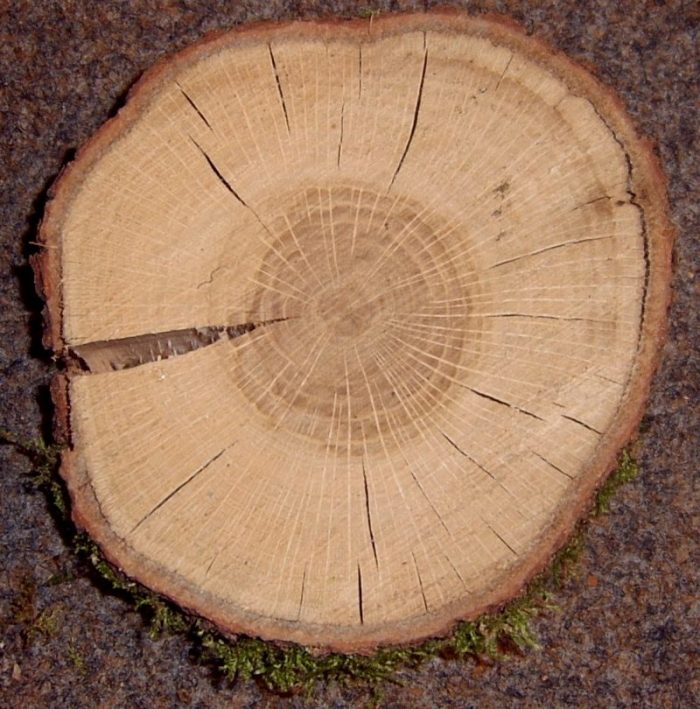
photo source: commons.wikimedia.com.
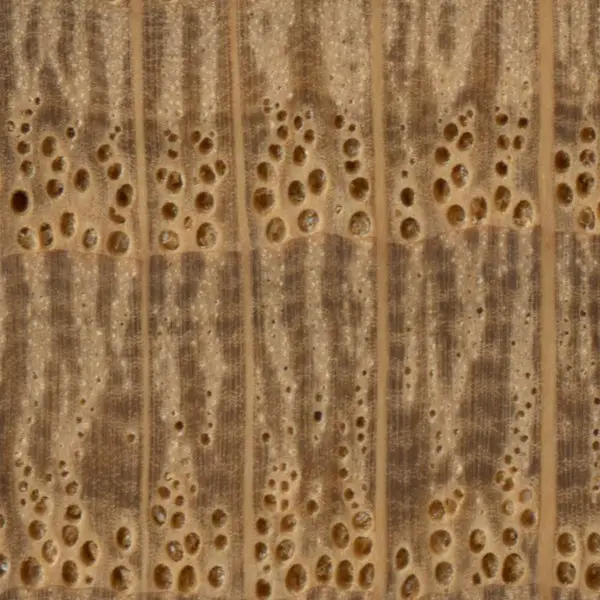
photo source: wood-database.com
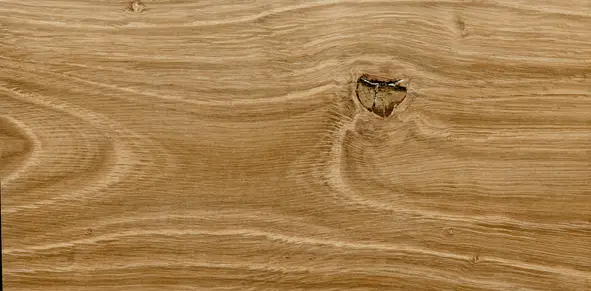
photo source: rarewoodsandveneers.com
Uses of oak wood
Furniture, flooring, beams, boats, barrels, veneer are made from oak. It is used in construction, interior decoration and outdoor landscaping. It has always been considered an important species, with a special appearance, used in the past for ceiling panelling, wall cladding and for carved furniture in castles and palaces. The corbels were also made of oak.
Today it is used in both construction and furniture making. In construction it is used as a load-bearing structure for houses or to decorate rustic-looking houses with beams and posts. Oak is used to make strong and attractive doors and windows. Despite its rough appearance and the impression that it can only be used for rustic furniture, it is also successfully used to make modern furniture. It is perfect for living room furniture as well as kitchen furniture. It is used for making chairs and tables. Lately, tables with a felie tree trunk, with finish as inconspicuous as possibleare very fashionable.
The pore pattern allows for very interesting finishes. The pores can be marked with patinas or special baths, highlighting the natural design. The natural look is achieved with wax or finished with oil. The content of tannins and salts in the pores can sometimes influence colouring. Therefore, in order not to alter the appearance of more special finishes, it is recommended to use a first coat of insulator.
One treatment that gives oak a special appearance is sandblasting. It can be done both mechanically and chemically. After sandblasting the wood takes on a much appreciated old-fashioned, chopped 3D look.
European oak is a highly valued raw material for obtaining barrels wine, but also whisky. The technologies are complex, and the flavour obtained by surface burning the wood is special.
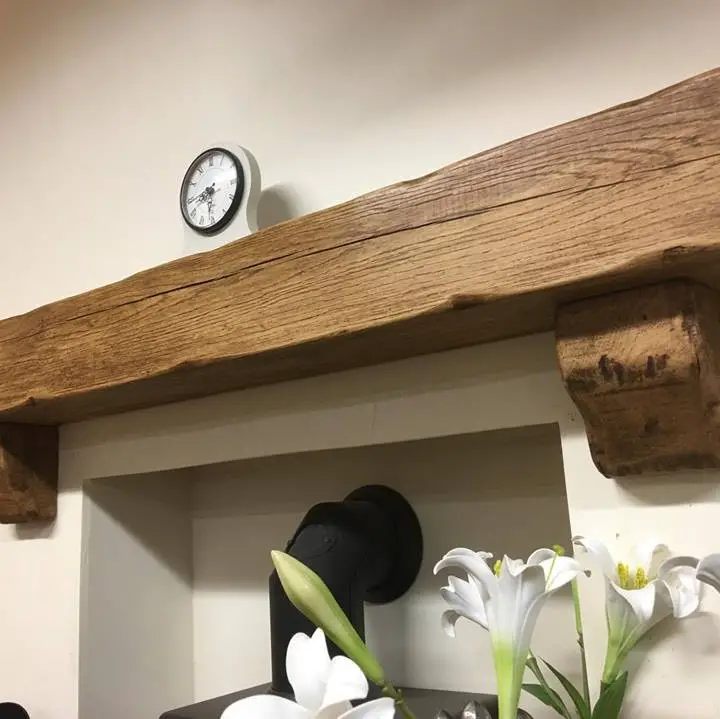
photo source: woodnwax.co.uk
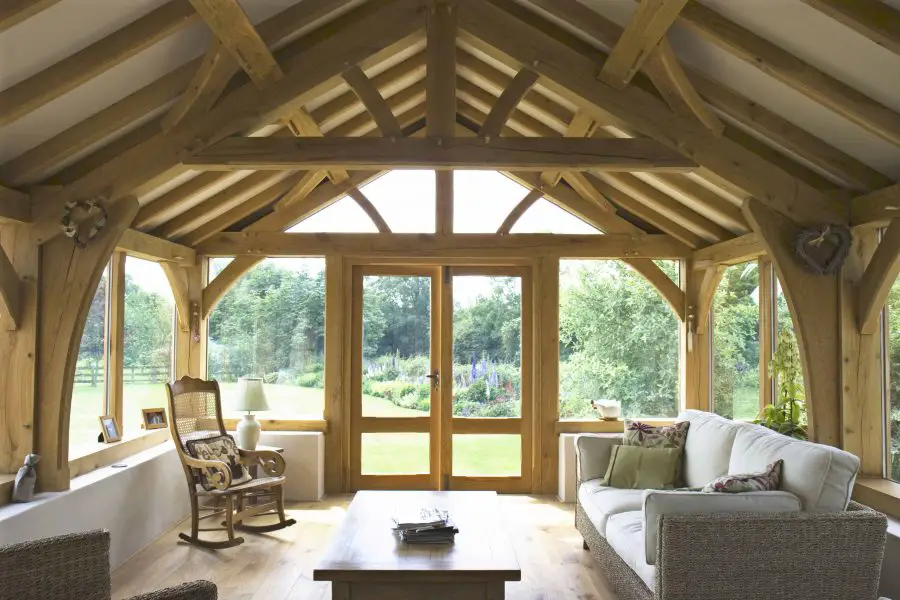
photo source: oakcarpenter.com
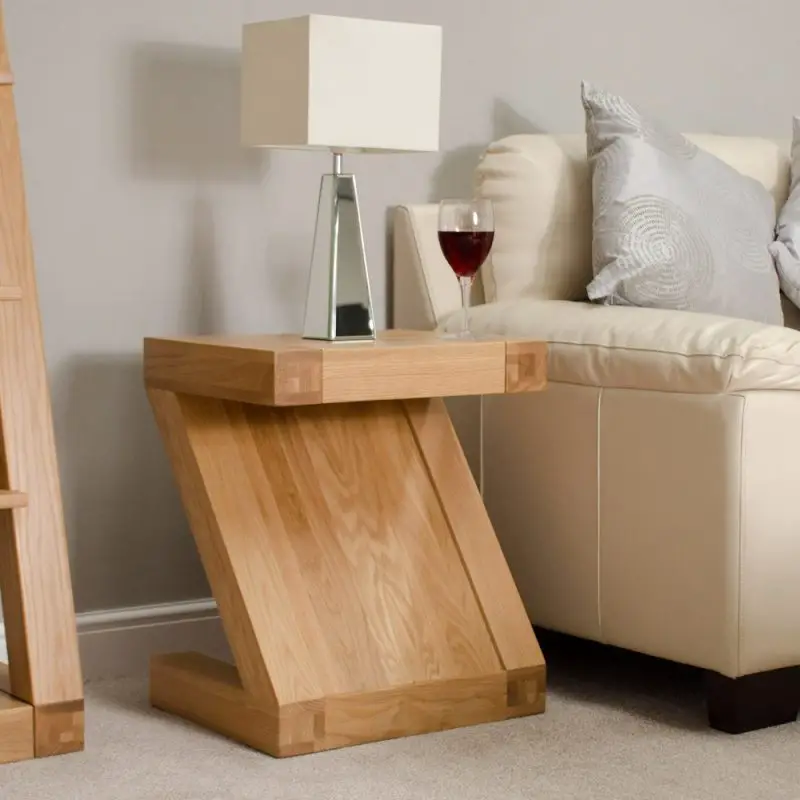
photo source: idealhomeshowshop.co.uk
I hope you find the above information useful. As usual, additions are welcome. And if you have any questions or queries, please leave them in the space below. I'm sure I'll reply.






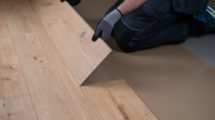











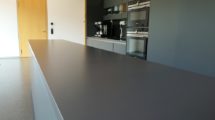









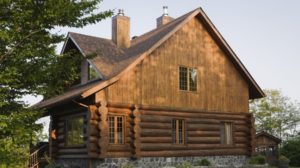

Hello,
I am working on a living room furniture similar to the one in the picture above, made of oak veneered panel, for a natural matte finish and to keep as long as possible the light shade, what finish do you recommend? Is it necessary to apply a layer of polyurethane insulator, is it advisable to apply it before or after the primer? Is it necessary to apply a primer or is the primer sufficient?
Thank you very much for the valuable information,
Isabela
Hello,
I recommend a solvent acrylic finish, which keeps the wood colour unchanged and does not yellow over time. There is no need to apply insulator (it is always applied as the first coat, before the primer) and I do not recommend it because polyurethane is more yellow and its hardener will yellow over time or if the wood has been chemically discoloured. This eliminates the risk of yellowing over time. There is also no need for impregnation. Impregnators are mostly used outdoors, where they protect the wood from fungi and insects and UV radiation. For a finish as above, natural (without applying colour), 2 coats of primer and one coat of varnish are sufficient, with sanding between coats for a nice smooth finish. The gloss of the varnish in the cabinet picture is 25-30, and the table around 10. The lower the gloss level, the lower the gloss and the less natural wood look. It will only betray your pleasant cough. 🙂
All the best.
I have a bookcase with sculpture that is the color of the one in the "old wall cladding" photo above. I love it and want to keep it but somehow transform it into a more modern style. I would like to change its colour to a grey shade. How should I go about it? What to use and how?
Thank you.
Magdalena
Good evening.
If you still want to see the natural grain of the wood, it's harder. You should remove the varnish layer and give it a grey bait. After that you should apply varnish again. You can also try with grey coloured varnish, but it is difficult to get such a varnish because of the yellow varnish stain. In addition the effect will not be the desired one, being closer to plastic.
If you don't want to see the wood design, you can use a grey water-based paint (such as Annie Sloan's creosote paint) to paint all the furniture. It's much easier to achieve than the first option and you don't even need to remove the coats of varnish. Just wash the surface with water and detergent to remove dirt, wipe well and apply the paint.
Good luck!
Don't forget to subscribe to the printed Wood Magazine! For only 58 lei/year you can find out news in the field, discover craft ideas or trade secrets. We remind you that the content in the printed magazine is different from the one on the website. Details in the link below.
Thank you!https://revistadinlemn.ro/product/abonament-revista-din-lemn/
Good evening! I would like to paint a new ash wood kitchen cabinet in a warm grey shade to match an oak countertop. What would you advise? What could I achieve this shade with, as I would like it to show the grain and not be translucent. Thanks in advance! Sincerely, T. Horga
Hello!
From what you say I understand that you want the natural design to show through, but not through the protective coating. In this case you should use a paint and the finish should not be thick. Ash is a wood with pores which will make its design even more visible. Use a thinner paint (just enough not to run off the brush) so that the wood absorbs and highlights the design. And it's even better with a stiffer sponge brush because it pushes the paint into the wood. You can find it in DIY stores, where the brushes are. After drying (and sanding between coats to get a nice touch finish) apply another coat of paint. If after the first coat you are very happy with the look, apply 1-2 coats of varnish over the paint. Look for a varnish in the same category as the paint (water-based, alkyd, nitrocellulose) so that the products are compatible.
I hope I understand what you want. If not, give me more details.
All the best!
Hello,
I recently installed a triple layered oak floor, unfortunately, there were a few areas where there was a bit of resin left (from gluing on the screed) and I cleaned it with thinner.
Those areas would look like grease spots, what do you recommend to do to fix them?
Thanks in advance
Hello!
The floor was probably not varnished. The solvent used diluted the resin which was absorbed by the wood. Hence the wet, stained wood appearance.
Try wiping the area vigorously with thinner 2-3 times.
If this doesn't work, you'll need to lightly sand the wood in the area with 100 or 120 grit sandpaper and then wipe with clean thinner. Finally, sand with 180 grit paper to make the wood smooth again.
If the floorboard was varnished, then the solvent attacked the varnish layer and the solvent-thinned resin penetrated under the varnish and stained the wood. You will need to remove the varnish layer, sand the wood and re-varnish.
Hello,
I want to make a set of wooden toys (Cuboro type). I would be interested in a discussion and possible advice.
with thanks
Dan
Hello!
You can write to me on mihaela.radu@cesbrands.ro